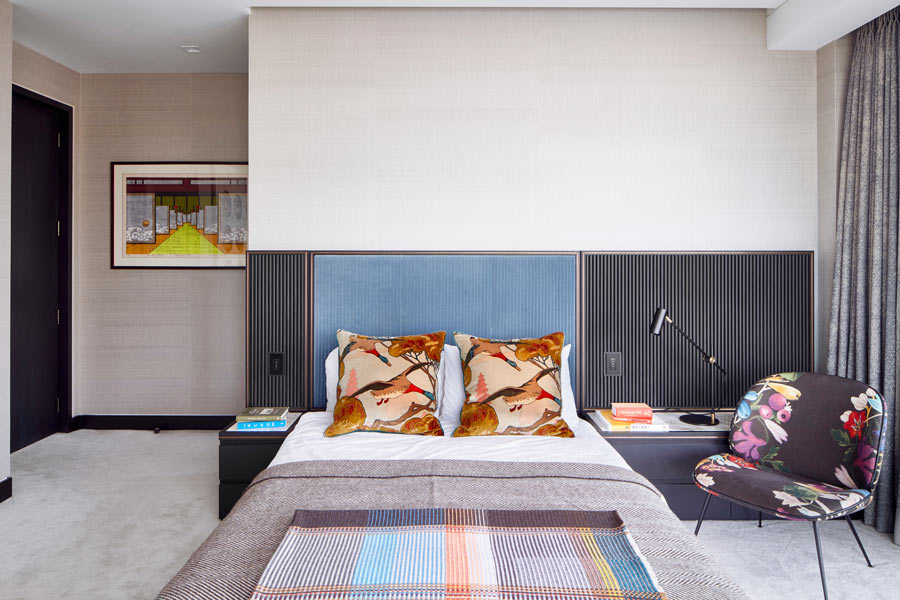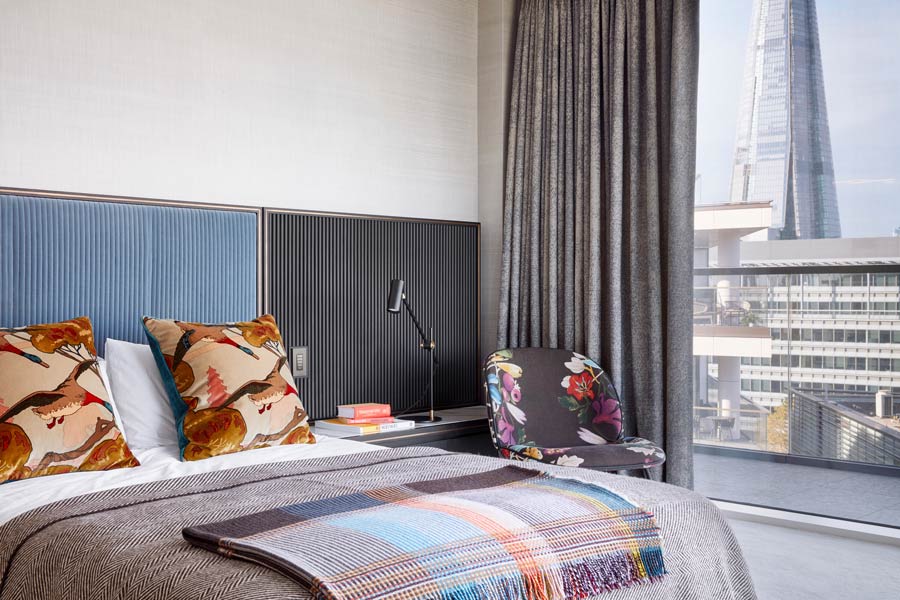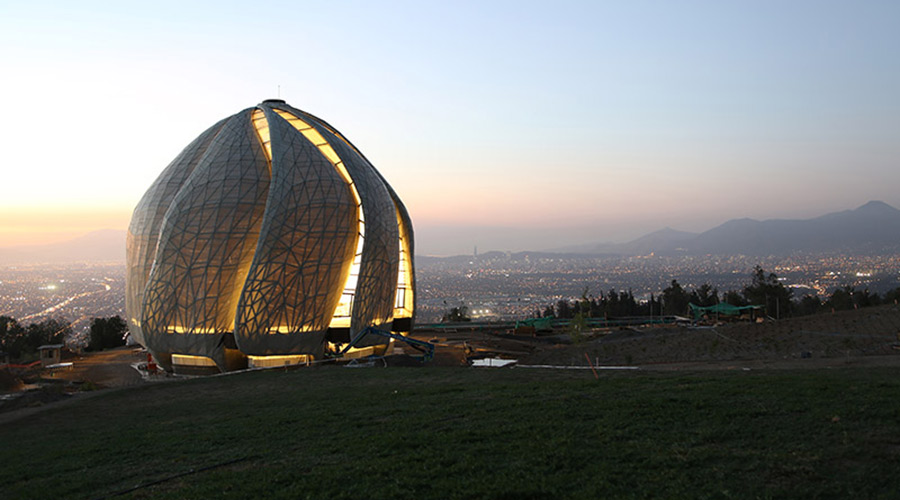The views expressed in our content reflect individual perspectives and do not represent the authoritative views of the Baha'i Faith.
Can a building be a spiritual space? Nasim Koerting, Co-Founder and Creative Lead of London-based interior architecture firm Studio Koerting, answers a definite yes.
Bahaiteachings.org Arts Editor Shadi Toloui-Wallace interviewed Nasim to learn about how the process of spiritualizing an architectural space involves, and to talk about what the Baha’i teachings have to say about the potential impact of those spaces on our minds, bodies and souls.
In the first part of the interview, Nasim reflected on how she discovered her passion for interiors, the inspiration behind her work and that of Studio Koerting, and aspects of the Baha’i Faith that influence her creative process when designing multi-functional spaces in collaboration with her clients.
Here, in the second part of the series, Nasim reveals how she prepares herself mentally and spiritually for a new project, opens up about her perspective on physical environments and their effect on our inner life, including the principles of design that guide her approach, and explains how she responds to an ever-evolving industry and the role the Baha’i Faith will play in influencing the world of architecture in the future.
Q: How do you mentally and spiritually prepare yourself for the creative process?
A: I do A LOT of research. I spend my time perusing the internet and social media for inspiration and ideas. I also speak to a lot of people and make sure I get out of the “home office” and see places and spaces to get inspired. Traveling is really a great inspiration for my creative process. Making sure you are in the correct mind and spiritual space is also really important. I start my days with a cup of tea, followed by prayer and meditation.
Q: What factors help you in deciding whether or not to seek out/take up a new client?
A: There are two main reasons why we take on a new client. The first being, if we feel we can really assist them and give them what they are looking for. The second would be the connection we have with the client. A positive project outcome relies heavily on the chemistry between client and designer.
Q: What are your feelings and experiences about creating a mutual reaction between our inner life and outer environment?
A: Great question! I believe that if a space reflects the nature, personality and purpose of the person who occupies it, it can be a real haven and assist those within it to carry out their purposes within it or through its energy. The best examples I can think of are the Baha’i Houses of Worship around the world, which are not only havens for the population, but a place that allows for the inner transformations of one’s life.
A small-scale example I can think of is designing a workspace. If designed with the right vision it can truly transform the way individuals work, and empower them to work to the best of their capabilities. The lines separating work and life are very blurred in our generation, so designing a space that caters to this can really assist the individual and the company as a whole.
Q: What are some elements/principles of design that you are most attracted to and try to integrate into your work?
A: There is nothing as important as an abundance of light when designing a space. It’s key to get this right. The Baha’i teachings refer to it constantly:
If man did not exist, this world would have no beauty, no eternity, no object. In the same way that the essence of man is the soul, the soul of this world is the subtle growth of spirituality, heavenly morals, divine favors and sacred powers. Were the physical world not accompanied by this spirit, it could not exist. A beautiful creature without a soul signifies nothing. A most sumptuous habitation set in darkness is non-existent. The most wonderfully wrought lamp, if it give no light, is useless. – Abdu’l-Baha, Divine Philosophy, p. 128.
My home is the home of peace. My home is the home of joy and delight. My home is the home of laughter and exultation. Whosoever enters through the portals of this home, must go out with gladsome heart. This is the home of light; whosoever enters here must become illumined. – Abdu’l-Baha, Star of the West, Volume 5, p. 40.
Also, our souls are naturally attracted to geometry and symmetry, so we always make sure our work is reflective of this. Craftsmanship and the handmade elements are the things that make a space feel unique. Custom handmade pieces are so rare, but they add so much to a space. We try to create warmth through woven fabrics, textures and color. You might be surprised to hear this but I’m afraid of color. Yep I said it. I believe color should be used in a more natural way, for example, the color of wood or natural stone.
Q: What are some practical tips you can offer to our readers who want to live in a coherent and beautiful space?
A: I would suggest searching for designers, eras and artworks that you are interested in and fascinated by, and seek out their pieces or inspiration from them. You don’t necessarily need to spend a lot of money on this, but with the right amount of research and time you can find these items. You can source through auctions, online and from vintage stores.
When purchasing furniture and items for the home, don’t buy throw away items that won’t last. Instead buy future heirlooms you can hand down to your children. Also, collect items over time, don’t rush into furnishing your space. Buy the future classics! Find makers and artisans that are producing beautiful handiwork and invest in them.
Q: Do you think the Baha’i Faith will influence aspects of interior design and architecture in the future?
A: Most definitely! Just look at how magnificent and ground-breaking every Baha’i House of Worship is! Each one has had its own unique set of challenges. Some architects even had to invent their own methods of construction of materials, as these weren’t even in existence yet. Similarly I can imagine how this idea of invention and limitlessness can be explored in the world of interior design.
It is also interesting to note that local Baha’i Houses of Worship are being built in consultation with the local population, communicating with the local populations, for example on the use of the space of worship, local customs and even the best materials to use in the construction of the building. This is very much a part of Baha’i culture—to consult with the end user to see how they best function and use the space. This is another sphere that the Baha’i teachings can influence—the interior space.
As well as a striving for absolute perfection, I can imagine the Baha’i teachings will also influence the design world in terms of sustainability and ethical production.
Q: What is next for Studio Koerting? Any exciting projects coming up? Plans for the future?
A: We have started working internationally on some exciting commercial and residential projects in both Europe and the Middle East! We are also completing a hotel project in the North of England in a heritage building built during the 18th century. The style is unlike anything we’ve ever done before. I’ve also been recently asked to be an ongoing contributor in a feature column for the Financial Times – FT Weekend section. Lots happening, so watch this space!
Q: Thanks so much for your time in answering our questions! If our readers want to learn more about your work, follow along, or get in touch, what’s the best way for them to do so?
A: Follow our instagram, which we update regularly. You can view how our projects are coming along and what inspires us on instagram.com/studio_koerting or visit our website studiokoerting.com. Feel free to email us at [email protected]



















Comments
Sign in or create an account
Continue with Googleor